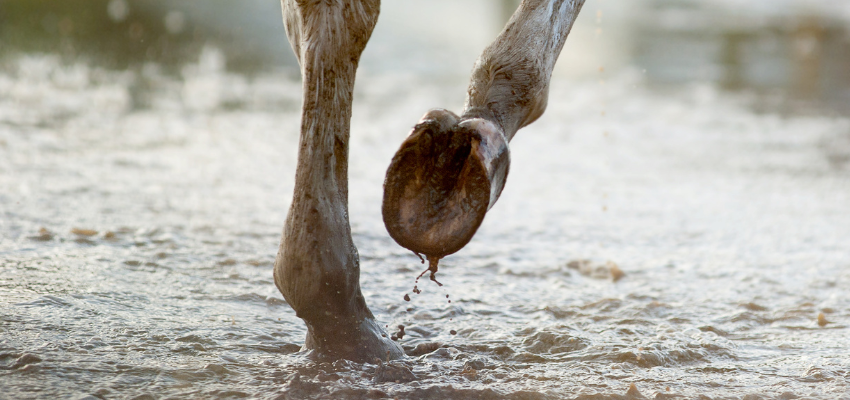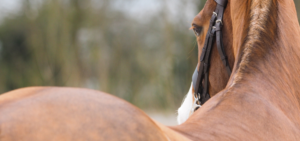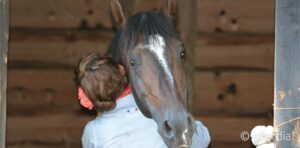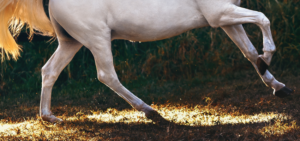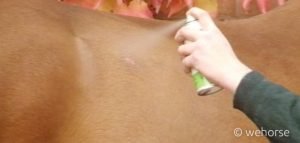Among the most common and persistent hoof problems in horses is thrush. It often occurs in the spring and fall and is promoted by wet weather conditions. In this article, learn about the causes, symptoms, treatment, and prevention of thrush in horses.
What role does the frog play in the hoof mechanism?
Before we delve deeper into thrush in horses, we’d like to explain the functions of the frog in the hoof mechanism. The frog consists of two lateral and one central sulcus and is made of elastic tissue. It plays a crucial role in the hoof mechanism. Firstly, it supports blood flow and circulation. Secondly, it’s of central importance to the horse’s movement. That’s because a healthy frog acts as a kind of shock absorber for your horse when it runs. However, if your horse has thrush, the frog cannot perform this function properly. As a result, your horse’s movement is limited.
What exactly is thrush in horses?
Thrush is a bacterial infection of the horse’s hoof, where decay bacteria (Fusobacterium necrophorum) penetrate the central and lateral sulcus. They decompose the tissue, initiating a decaying process. This leads to hollow spaces, grooves, and a foul-smelling, decayed mass.
What does thrush look like in horses?
Here, we’ve summarized all the signs and symptoms for you:
- Deep and narrow frog sulcus
- Dark, slimy frog
- Unpleasant, rotten smell
- Cavities and cracks
- Soft, detaching frog horn
- Lameness
- Rings on the hoof wall
What causes thrush in horses?
A horse’s hoof is very sensitive, making it an easy target for bacteria. The causes of thrush are often due to inadequate hygiene and cleanliness, promoting bacterial growth:
- Muddy paddock: If your horse stands in a muddy paddock for too long, moisture and dirt soften the hoof horn, facilitating bacterial penetration.
- Dirty ground: Urine and manure provide the perfect breeding ground for bacteria. If the bedding, for instance, is dirty and damp, it harms the horse’s hoof, making it easier for bacteria to invade.
- Lack of movement: If your horse doesn’t move enough, the hoof mechanism isn’t adequately activated. This reduces blood flow to the hooves and diminishes hoof horn production, making the frog susceptible to thrush. Are you looking for training inspiration? On our website, you will find a variety of ideas and exercises for ground work, in-hand work, or riding.
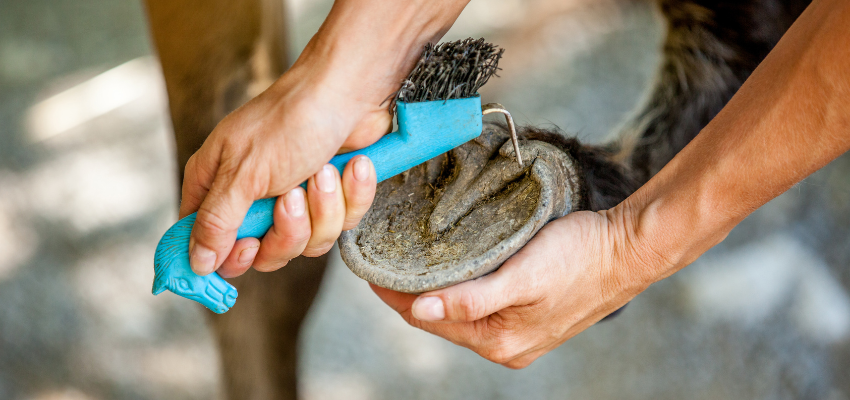
- Insufficient hoof care: If you don’t regularly clean your horse’s hooves, there isn’t enough oxygen reaching the frog sulcus. This can lead to the development of thrush.
- Insufficient & incorrect hoof trimming: If the farrier trims your horse’s hooves too infrequently or incorrectly, misalignments or a lack of oxygen in the frog can promote the onset of thrush in horses.
- Improper feeding: Insufficient or excessive supply of minerals, trace elements, and vitamins, as well as an excess of protein or sugar, can encourage thrush in horses.
Q-tip Test
If you suspect your horse has thrush, you can carefully insert a Q-tip into the affected frog sulcus. If it comes out black afterward, there’s a high likelihood that your horse has thrush.
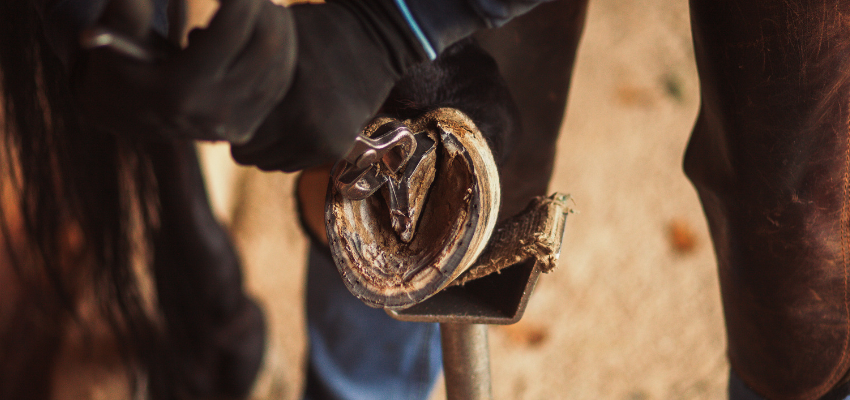
What you should do about thrush in horses
If your horse has thrush, you should start treatment as soon as possible. It’s best to involve a veterinarian or farrier. They can best assess the condition of the frog, thoroughly clean the hoof, and remove the decayed tissue from it.
For a successful treatment, keep the hoof dry and clean. Mainly keep your horse on dry ground. Also, regularly remove horse droppings and wet bedding. Clean the hoof daily and disinfect your horse’s frog. Use the remedies prescribed by the veterinarian or farrier. If a misalignment or incorrect shoeing caused the thrush, a special shoeing might be necessary.
Effective treatments for thrush in horses
The following treatments can help your horse with thrush. Please discuss the use of disinfectant and antibacterial remedies for thrush with your veterinarian or farrier. Which remedy your veterinarian recommends depends on the condition of the frog. These thrush treatments are the most commonly used:
- Iodoform ether: This thrush remedy can only be prescribed by your veterinarian. Discuss the treatment with them thoroughly since while the remedy disinfects well, it also makes the frog lose its natural protective function and become dry and cracked. This makes it easier for bacteria to penetrate.
- Betaisadona: If your horse’s frog is already very sensitive, your veterinarian will recommend a milder disinfectant, such as Betaisadona.
- Hydrogen peroxide: This thrush remedy also kills bacteria and helps combat thrush. You should also discuss the use of hydrogen peroxide with your veterinarian, as it can dry out the hoof.
- Blue spray: The ingredients in blue spray are not always the same. Therefore, be careful and discuss its use with your veterinarian before treatment.
- Copper sulfate: Copper sulfate has antibacterial and drying properties and stimulates horn production. Make sure to dose it correctly and not apply it to bleeding wounds, as copper sulfate must not enter the bloodstream.
Home remedies for thrush
These home remedies also have a disinfecting and neutralizing effect against mild thrush in horses:
- Vinegar: Neutralizes ammonia, protects against bacteria, and strengthens the horn walls.
- Toothpaste: Has antibacterial and drying effects.
- Tea tree oil: Has antibacterial properties.
- Honey and onions: Have antibacterial effects.
What are the consequences of inadequate thrush treatment in horses?
If left untreated, the decay process can penetrate deeper into the horn, spreading to the sole’s ball horn and the hard horn of the sole and hoof wall. This causes painful damage and impacts your horse’s entire hoof mechanism in the long run. There’s an increased risk of hoof laminitis. Additionally, inadequate treatment of thrush can lead to hoof or frog cancer. That’s why it’s essential to treat thrush in horses timely and adequately.
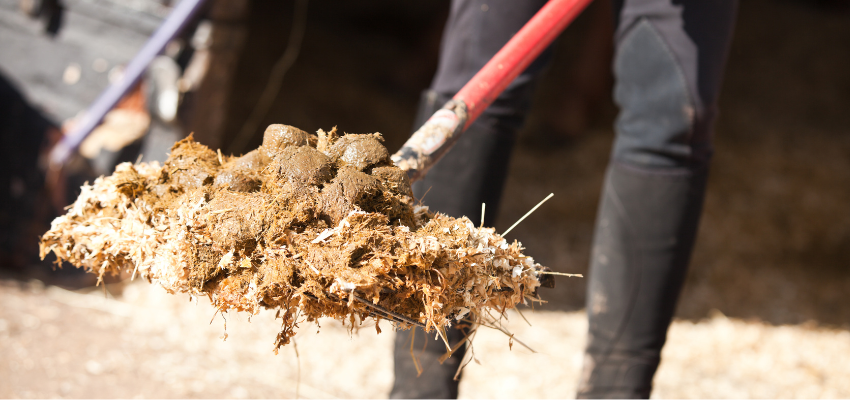
How can thrush in horses be prevented?
These measures can help you prevent thrush:
- Regularly remove horse droppings and wet bedding.
- Try to keep the paddock mud-free.
- Clean your horse’s hooves regularly.
- Ensure regular hoof care by a farrier.
- Pay attention to proper feeding.
- Ensure adequate exercise.
Our conclusion:
Thrush in horses is a bacterial disease of the horse’s hoof, which can manifest with symptoms such as deep, narrow frog grooves, a dark, slimy frog, an unpleasant, rotting smell, and lameness. The causes of thrush are often due to insufficient hygiene and cleanliness, promoting the spread of bacteria. If you notice thrush in your horse, you should start treatment as soon as possible. It’s best to involve a veterinarian or farrier in this process.

